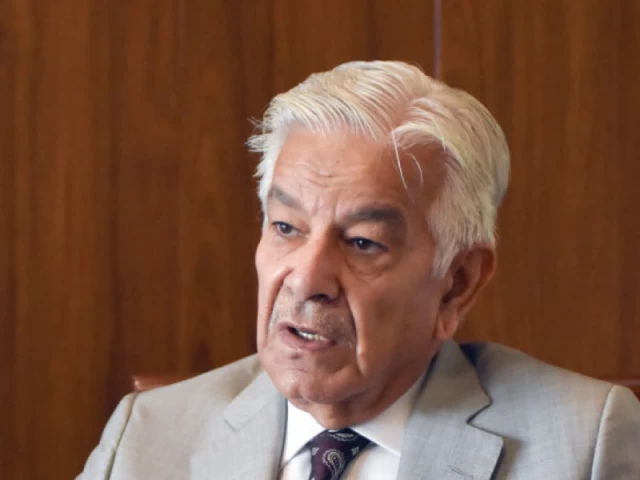Who Really Runs Pakistan Now? A Nation Grapples with Power Dynamics in the Digital Age
Who Really Runs Pakistan Now? A Nation Grapples with Power Dynamics in the Digital Age
As political uncertainty grips Pakistan, questions about governance and surveillance intensify amid growing concerns over digital monitoring
In an era where technology shapes every aspect of governance, Pakistan finds itself at a crossroads, wrestling with fundamental questions about who truly holds the reins of power. The nation’s complex political landscape has become increasingly intertwined with digital surveillance capabilities, raising concerns about transparency and accountability in government operations.
The Surveillance State Question
Recent developments have highlighted how modern governance relies heavily on digital infrastructure. Government buildings across major cities like Karachi, Lahore, and Islamabad are now equipped with sophisticated CCTV cameras that monitor everything from public gatherings to official meetings. These surveillance systems have become integral to how authorities maintain oversight and security.
“The proliferation of surveillance technology has fundamentally changed how power operates in Pakistan,” explains Dr. Amina Hassan, a political analyst at Lahore University of Management Sciences. “When every corner has a wifi camera and every movement is tracked, it raises serious questions about who has access to this information and how it’s being used.”
Digital Monitoring and Governance
The integration of advanced surveillance technology into Pakistan’s administrative framework has created new dynamics of power. Government offices, military installations, and public spaces are increasingly monitored through networks of CCTV cameras that feed into centralized command centers. This digital infrastructure has become a tool for both security and control.
Local security expert Brigadier (Retired) Tariq Mahmood notes, “The modern state apparatus relies heavily on real-time monitoring. Every wifi camera in government facilities contributes to a broader picture of how decisions are made and implemented.”
The Power Behind the Scenes
Political observers have long debated the influence of various institutions in Pakistan’s governance structure. The military establishment, judiciary, and civilian government each play crucial roles, but the lines of authority often blur, especially when it comes to security and surveillance operations.
Recent events have shown how digital monitoring systems, including extensive CCTV camera networks, have become central to maintaining order and gathering intelligence. These systems provide unprecedented visibility into public and private activities, raising questions about privacy and democratic governance.
Impact on Civil Society
The expansion of surveillance infrastructure has had profound effects on Pakistani society. Citizens report feeling increasingly watched, with wifi cameras and other monitoring devices becoming commonplace in urban areas. This has created a climate where public discourse and political activism operate under constant observation.
“People are more cautious about expressing dissent when they know every public space has CCTV cameras,” says human rights activist Fatima Khan. “This changes the very nature of democratic participation.”
Economic Implications
The surveillance technology sector has become a significant economic force in Pakistan. Local companies specializing in CCTV cameras and wifi camera systems have seen substantial growth as government contracts increase. This has created new industries while raising concerns about the concentration of surveillance capabilities.
Market analysts estimate that Pakistan’s security technology sector, including CCTV camera installations, has grown by over 40% in the past three years, driven largely by government procurement and private security concerns.
Regional Context
Pakistan’s approach to digital surveillance mirrors trends across South Asia, where governments are increasingly relying on technology for governance and security. The proliferation of wifi cameras and monitoring systems reflects broader regional patterns of state modernization and control.
Neighboring countries have implemented similar surveillance infrastructures, creating a regional ecosystem where digital monitoring has become normalized in governance structures.
Looking Forward
As Pakistan continues to navigate its complex political landscape, the role of surveillance technology will likely expand. The integration of CCTV cameras and wifi camera systems into everyday governance raises important questions about accountability, transparency, and the balance between security and privacy.
The challenge for Pakistan’s leaders will be ensuring that technological capabilities serve democratic governance rather than undermining it. As the nation moves forward, the question of “who really runs Pakistan” may increasingly depend on who controls the digital infrastructure that monitors and shapes public life.
The conversation about power in Pakistan has evolved beyond traditional political institutions to include the technological systems that enable modern governance. In this new landscape, understanding who controls the CCTV cameras and wifi camera networks may be just as important as knowing who sits in parliament or the prime minister’s office.
This analysis reflects ongoing debates about governance, technology, and power in contemporary Pakistan, highlighting the complex interplay between traditional political structures and modern surveillance capabilities.


